You sell what? Plastic Sheeting? What do you mean, “Plastic Sheeting” they will ask. You mean like the hard plastic you see in signs? No… You mean like the plastic sheeting that is in Las Vegas that covers tall building advertising Celine Dion? Well yes you are getting closer. “How else can you describe the plastic sheeting that you sell” they will ask. How about this, “Our plastic sheeting is like a GIANT roll of Saran Wrap, only its 6 feet wide by 100 or more feet long.” Then the light starts to come on- sort of. At this point they visualize one type of plastic sheeting- such as visqueen that they see at a home improvement store!
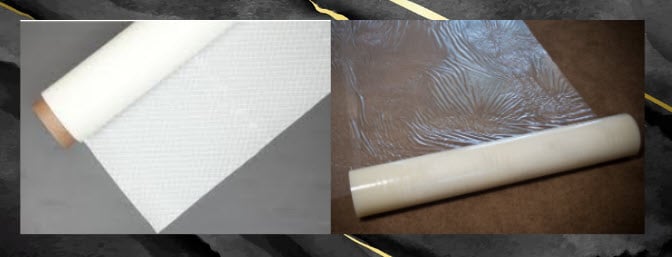
“What does one do with this roll of plastic sheeting” is the next question! I go on to explain that Global Plastic Sheeting doesn’t just sell one type of plastic sheeting- we sell a large variety of engineered plastic sheeting or flexible polyethylene. When you throw in the words, “engineered plastic” you have really done it now! “WHAT”?? You see, plastic sheeting is designed to work specifically for the surface or job it is intended for. “HUH”?? It’s kind of like seasoning for cooking. Do you use just one type of seasoning for all the food you prepare? Or do you have different seasonings that are designed to enhance the type of food it will be added to? It’s like that with plastic sheeting.
If a person is painting the interior and exterior of a house, or a contractor is working in a hotel, they want to make sure they don’t damage the floors, carpets, countertops, wood railings, etc. with paint drops or spills. Each one of these surfaces can be optimally protected with a plastic sheeting film that is designed just for it. Let’s take the countertops. Do you want workmen to put their bulky tools, or painting trays on the beautiful granite counter tops without protecting them? No. You want to make sure that what is protecting the counter won’t slide off, or allow paint to seep through it. Properly protecting counters calls for a product called, GPS Countertop Plastic.
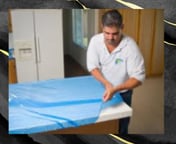
This plastic sheeting is sticky on one side, so the contractor can adhere it to the surface of the counter and be assured it won’t slip off until he/she removes it. Self adhesive plastic sheeting for countertops has specially formulated adhesives that are strong enough to stick to the counter, but not so strong that it won’t come off at the end of the job! You need an adhesive formulation that won’t ruin the counter- whether it is Corian, marble, granite, tile, etc. The GPS Countertop Plastic is an engineered film, meaning it was engineered in the lab to make sure that it would property protect the counter without doing any damage, or leaving any glue or adhesive behind.
Now, let’s think about the carpeting. Carpeting is very expensive to replace. Professionals and informed home owners know that it is a very cost effective measure to put self adhesive GPS Carpet Plastic down on the carpeting so nothing can get through to the carpet and ruin it. Do you think the adhesive in the GPS Carpet Plastic is the same formulation as the formulation for the hard countertops? Of course not! Once again you need an engineered plastic film that will allow adhesive to be applied to one side so it will stick nicely to the carpet. This adhesive is stronger than the adhesive for the counters due to the nature of the carpet fibers. Again this is an engineered film because research had to go into making sure that the adhesive formulation would not leave any glue or adhesive residue on the carpeting when it is pulled up. Why do professionals use self adhesive GPS Carpet Plastic instead of drop cloths? For several reasons. For one thing, once you put the GPS Carpet Plastic down, it’s not going to slip or inadvertently slide off the carpet exposing the carpeting to potential damage. Plus, have you ever knocked over a paint can, or stepped in the pan? Trust me, you want a plastic sheeting product that won’t let the paint get through to the carpet.
CRAWL SPACE (Crawlspace) AND UNDER-SLAB VAPOR BARRIERS (retarders)
So now at this point I hope you are starting to get a feel for what engineered plastic sheeting is. Let’s take it one step further. Have you ever thought about why wood floors don’t warp or get ruined when they are placed on
%20AND%20UNDER-SLAB%20VAPOR%20BARRIERS%20(retarders)-jpg.jpeg?width=246&height=244&name=Why%20you%20need%20CRAWL%20SPACE%20(Crawlspace)%20AND%20UNDER-SLAB%20VAPOR%20BARRIERS%20(retarders)-jpg.jpeg)
concrete slabs? How is it that the ground water under the concrete isn’t permeating the concrete and ruining the wood? Once again we have an engineered plastic sheeting vapor barrier that is placed under the concrete so it can block the water that naturally wants to rise to the surface. Can any plastic hold up in that environment year after year? Absolutely not! A lot of time and money went into designing all different types of vapor barriers that will retard vapors from rising from the ground. And another consideration is creating or engineering a vapor barrier that can also block methane gas, radon gas, and other dangerous gases that cause lung cancer. A vapor barrier must be engineered with a very tight cell structure to stop the gas molecules from penetrating the plastic sheeting, also called a vapor retarder. WOW what an invention! Most people will comment that they never once gave a thought to needing a vapor retarder that goes under their home of office building.
Another place where plastic sheeting is used extensively is in crawl spaces or basements. People who live in the part of the country that have crawl spaces and basements are all too aware of needing plastic sheeting to encapsulate their crawlspace. The crawlspace is often smelly or musty smelling. When a contractor puts down a crawl space vapor barrier/ retarder it will keep the water from seeping up into the crawl space.
Additives for Plastic Sheeting: Fire Retardant Plastic Sheeting
When you bring up “fire retardant plastic sheeting” the eyebrows seem to go up. “What?? Plastic can become fire retardant….NO WAY” is often the comment. “How is that possible?” Once again, the reason there are so many varied types of plastic sheeting is because polyethylene can accept additives to its formulation. A fire retardant additive is added, and voila- fire retardant plastic sheeting is here to serve applications that require fire retardant materials. Where is fire retardant plastic used? Lots of places-Ship building, aerospace, hospitals, commercial building projects, theatre, haunted houses to list a few. Any place where a fire could be an issue, and where life and limb are at stake- fire retardant plastic sheeting is a must. So much so that the fire marshal will inspect and make sure the plastic is fire retardant. What confuses some people is that when a fire retardant sheet of plastic is exposed to a flame, the plastic won’t be a fuel source for the fire. It will merely melt and extinguish. If you would like to see a video of this, click here and watch as we put a blow torch to a piece of regular non-fire retardant plastic, and a fire retardant piece of plastic. Seeing is believing!
What are some of the other additives that are added to Plastic Sheeting?
Anti-Static Additive: This additive is added to our Anti-Static Fire Retardant plastic- or ASFR-6. The Anti-static additive resists static build up. The reason this is necessary is because unlike so many common every-day items that have an equal number of positive and negative charges, friction can cause the plastic to become electrically charged. If this happens sparks can happen which will damage electronic devices. ASFR-6 doesn’t allow dust to stick to it. This matters in abatement applications
UV Stabilizers: So often plastic sheeting/ liners are used outside in direct sun light. The UV from the sun is a direct enemy of the plastic. The sun’s UV will decompose a liner pretty quickly over time. UV stabilizers give plastic sheeting a much longer life outside.
Color Additives: While you may not stop and think about it, plastic sheeting comes in a rainbow of colors. The most common colors are black and white, but other colors prevail.
These are just a few of the additives that can be added to polyethylene to engineer its performance to suit the application.
The next topic that seems to come up is the thickness of the plastic sheeting. “Is it all the same thickness- or are there different thicknesses”? When you haven’t given a thought to the flexible film industry before- how could you know if there are varying thicknesses of plastic. The answer is, “yes”. Plastic sheeting goes from 1 mil all the way up to 100+ mils thick. A “mil” is a measurement that equals one-thousandth of an inch, or 0.001 inch. For example, most human hair is one-thousandth of and inch thick. It then goes to follow that a 6 mil film (plastic sheeting) is thicker and is 6-thousandths of an inch, or 0.006 inch. Does thicker mean stronger? Is a 10 mil liner stronger than a 6 mil scrim (String) reinforced liner? OH OH! Let’s take this a little further….
Not only can plastic sheeting have fire retardant additives added but it can be manufactured in layers. In the middle of 2 layers, and can a layer of scrim (String). This is applied in a pattern. The Dura-Skrim plastic sheeting products put their heavy duty scrim in a diagonal pattern space 3/8” apart. They then add an additional machine direction scrim every 9” across the width. Why?? The string or scrim as it is referred to addes a great deal of strength to the film. When an application needs enhanced tear resistance and a long life for the plastic sheeting, adding the scrim makes the difference. What happens is the string/scrim responds immediately to tears and surrounds the tears and stops them. Applications that appreciate string reinforced plastic sheeting are ones where you want a thinner film such as a 6 mil that can still do the job of a heavy duty plastic sheeting product. Dura-Skrim 2 is a champion for use in construction enclosures, temporary walls, temporary covers, and much more.
PLASTIC SHEETING USED IN AQUAPONICS AND WATER FEATURES:

What happens if you want to line a fish pond with plastic so the water won’t seep back into the earth? Will any old liner do the job? What things must you consider when building a pond? One of the first things that has to be established is whether you will be adding fish to the pond. Did you know that common plastic sheeting can leach bad chemicals into the water which can kill your fish? Have you thought about how robust a liner you need depending on how rocky the ground is where you are putting the liner? You also need to think about whether animals such as deer will be walking into your pond. If they are, you need a strong liner that won’t puncture when their hooves dig into the pond liner. This is one more example of why there are so many varieties of plastic sheeting product engineered for the application.
GREENHOUSE PLASTIC SHEETING
Oh that’s right. You have seen countless greenhouses that have roofs made from plastic sheeting! They are everywhere! What if a green roof film was made similar to bubble wrap, but with industrial strength? What could be accomplished by adding bubbles to plastic sheeting? What you would get is a product called, SolaWrap! 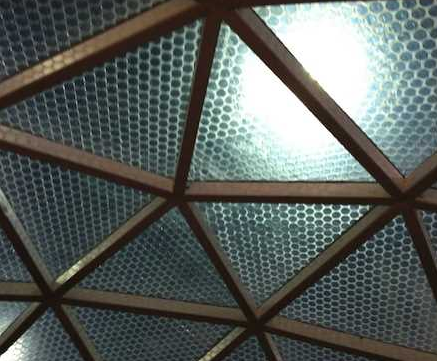 Engineers long ago discovered that by adding the bubbles you could attain a R-vale of 1.7, with a transparence of 83%. With 83% diffused light you will have plants that flourish! What else does this plastic sheeting need to do it’s job as a green house roof? It needs UV additives so it can last 10 years! The film needs to be strong enough to support a snow load! Look what can be done by making some additions to the standard polyethylene film!
Engineers long ago discovered that by adding the bubbles you could attain a R-vale of 1.7, with a transparence of 83%. With 83% diffused light you will have plants that flourish! What else does this plastic sheeting need to do it’s job as a green house roof? It needs UV additives so it can last 10 years! The film needs to be strong enough to support a snow load! Look what can be done by making some additions to the standard polyethylene film!
HEAT SHRINK WRAP
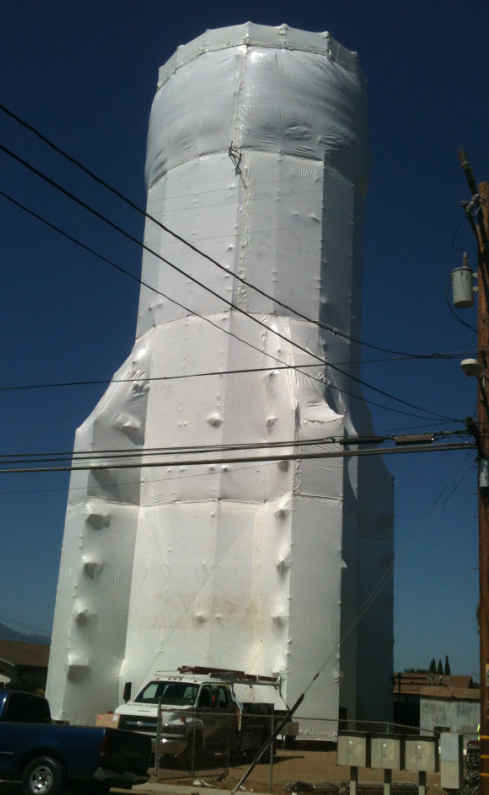
Have you ever stopped to realize that those building that you see surrounded by plastic sheeting are being done so with “Heat Shrink Wrap”? How genius it was to discover that you can formulate the plastic in such a way that when you add heat to it, it shrinks and envelops the object it is surrounding! Heat shrink wrap is used for wrapping yachts, boats, bridges, US Navy ships, scaffolding, all sorts of packaging for shipment and more. When you see a building wrapped, this is because the construction crew may want to protect the interior from the elements. It also makes for a warmer environment to work in during the winter months.
This article just barely scratches the surface regarding “plastic sheeting”. It’s quite an expansive product line that serves aerospace, aquaponics, automotive, FEMA, haunted houses, ice skating rinks, maritime/marine industry as well as the packaging arena. The best part of this product is the fact that it can be manipulated to best serve the customer. One can decide how much adhesive they want added to the plastic depending on what it needs to stick to. Plastic sheeting can be made with a very tight cell structure, or one that needs to breathe. It can be stiff or flexible, withstand the cold, heat, wind, sun, etc. As much as plastic takes a lot of heat for harming the environment, engineered plastic is here to serve and protect as they say- the surfaces they are used with. Ground water is protected with HDPE liners, and roads use plastic sheeting to capture the dirty oily water that comes off the road, and direct it to a place where it can be filtered before in enters the earth. Many plastic can be recycled as well. Our goal is to provide the very best plastic sheeting made in the USA to perform it’s designed duties it was designed for.





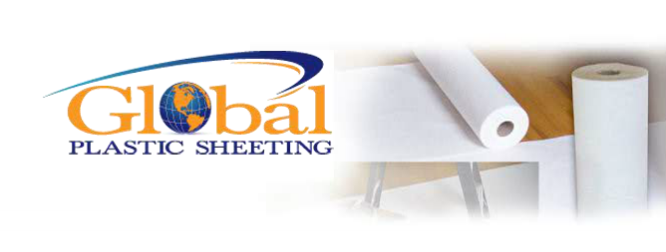


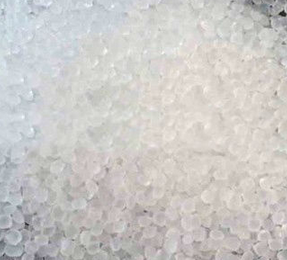

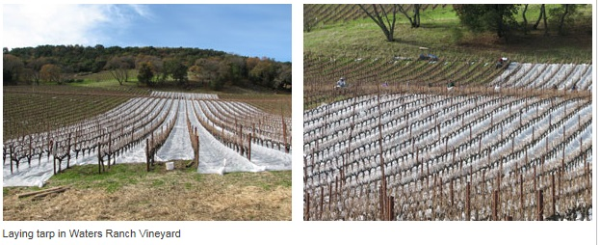





%20AND%20UNDER-SLAB%20VAPOR%20BARRIERS%20(retarders)-jpg.jpeg?width=246&height=244&name=Why%20you%20need%20CRAWL%20SPACE%20(Crawlspace)%20AND%20UNDER-SLAB%20VAPOR%20BARRIERS%20(retarders)-jpg.jpeg)

 Engineers long ago discovered that by adding the bubbles you could attain a R-vale of 1.7, with a transparence of 83%. With 83% diffused light you will have plants that flourish! What else does this plastic sheeting need to do it’s job as a green house roof? It needs UV additives so it can last 10 years! The film needs to be strong enough to support a snow load! Look what can be done by making some additions to the standard polyethylene film!
Engineers long ago discovered that by adding the bubbles you could attain a R-vale of 1.7, with a transparence of 83%. With 83% diffused light you will have plants that flourish! What else does this plastic sheeting need to do it’s job as a green house roof? It needs UV additives so it can last 10 years! The film needs to be strong enough to support a snow load! Look what can be done by making some additions to the standard polyethylene film!

 Self Adhesive:
Self Adhesive:  Scrim/String Reinforced:
Scrim/String Reinforced: Textured Plastic Sheeting:
Textured Plastic Sheeting:





